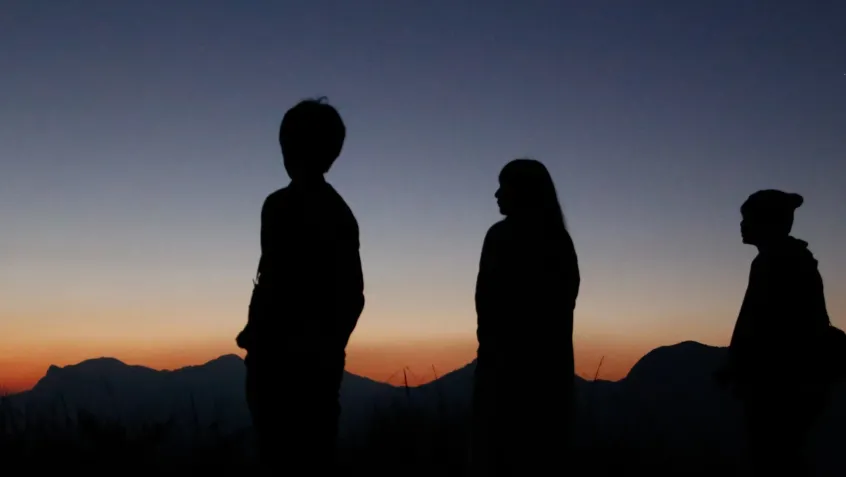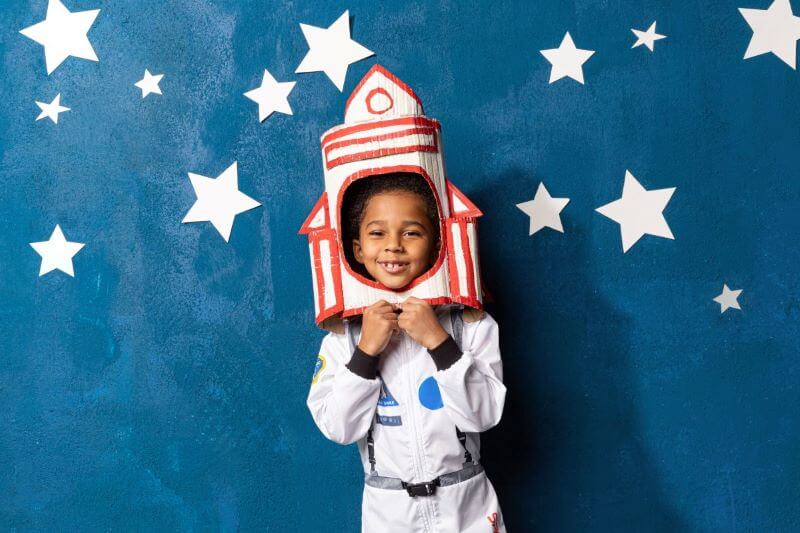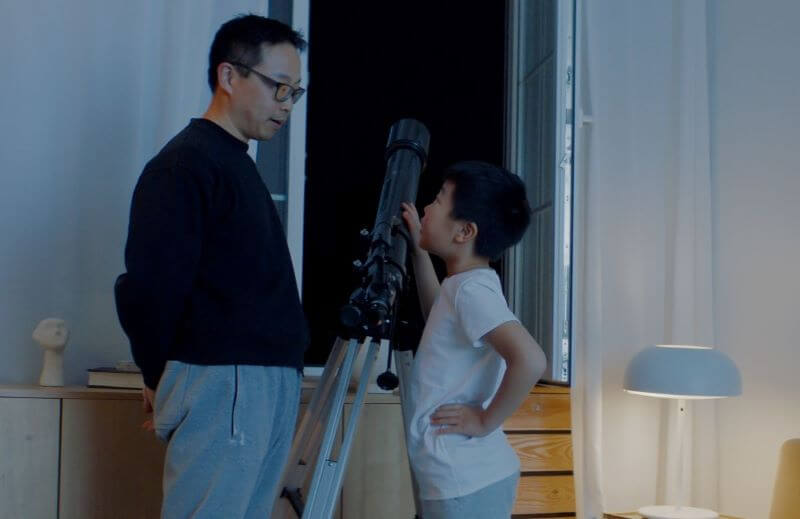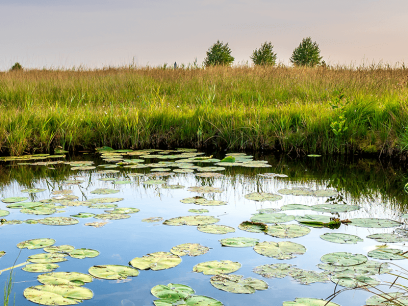
Discover citizen science projects and free curriculum to help kids learn about the night sky.
February 3 marks the midpoint of winter, the best time of year for skywatching. Cold air can't hold as much moisture as warm air can, making the night sky especially clear right now.
The sky looks darker, too. That's because during the summer months, Earth is facing toward the center of the Milky Way galaxy, which is crowded with billions of stars, giving the sky a slightly hazy quality. Right now, however, we're looking away from the Milky Way's core, allowing us to see some especially bright stars and other fascinating celestial features.
Planets like Mercury, Venus, Mars, Saturn, and Jupiter are visible in the northern hemisphere this month, along with certain constellations. Orion is a popular constellation to start with when stargazing during winter. “The hunter” is especially easy to spot thanks to Betelgeuse—a bright orange star 1,000 times bigger than the sun—and Bellatrix, that together make up his shoulders. His famous belt consists of three stars in a line: Alnitak, Alnilam, and Mintaka.
Get Ready to See Stars
There are many online resources to help you get the most out of stargazing. Check out Sky & Telescope's weekly “sky at a glance” update or the University of Texas McDonald Observatory's StarDate website to learn what is visible this week. Use this Clear Sky Chart to make sure clouds won't block your view of the night sky.
Stargazing doesn't require special gear. Your own unaided eyes, or a pair of good binoculars, are all you need to get started. Make sure to wear warm clothing when stargazing during cold nights. And don't forget your feet—thick socks and insulated shoes are a good idea.
For the best views, find a place with as little light pollution as possible. This could be as close as your own backyard or at a nearby park, or another location that has received a “dark sky” designation.
Five Ways to Be a Citizen Scientist
Stargazing offers many opportunities to be a citizen scientist (also referred to as a “community scientist”). These projects allow kids and adults alike to contribute to scientific research that shapes what is known about our planet, solar system, and universe.
- Spot the Station: The International Space Station is the third brightest object in the sky and easy to spot if you know when to look up. It looks like a plane, only much higher and traveling much faster. Sign up to receive email or text alerts when the space station is flying over you.
- JunoCam: NASA's Juno mission is studying Jupiter to learn how it formed and has changed over time. Amateur astronomers are invited to upload their telescopic images and data to provide context for new JunoCam images and help NASA plan the future of the mission.
- Globe at Night: This international campaign raises public awareness of the impact of light pollution by inviting citizen scientists to measure their night sky brightness and submit their observations online. You can also explore the last 14 years of data on an interactive map to see how your city's light pollution has changed over time.
- Planet Hunters TESS: The Transiting Exoplanet Survey Satellite (TESS) provides huge amounts of data that help researchers look for planets outside of our own solar system, including planets that could support life. More than 32,000 volunteers have contributed to the project so far by analyzing data and identifying patterns that computer algorithms have difficulty detecting.
- Aurorasaurus: This initiative tracks auroras (also known as the northern lights) around the world via reports on their website and social media that you can help verify. To observe the aurora borealis, you need to be located in a northern latitude when conditions are just right for a geomagnetic storm.

Free Curriculum to Learn More About the Night Sky
Bring the night sky into your classroom with these lesson plans and curriculum guides that introduce students to some of the many ways they can discover the science going on in the night sky.
- NASA STEM Engagement: NASA offers a wide variety of formal and informal education resources for K-12 students, including lesson plans and educator guides. For example: the Exploring Stars in the Milky Way Educator Guide includes 13 mathematical activities that introduce students to places in our galaxy outside our solar system.
- James Webb Space Telescope STEM Toolkit: The James Webb Space Telescope (JWST) is a large, space-based observatory launched in December 2021 that will detect light emitted from the universe's first galaxies formed over 13.5 billion years ago. NASA offers a variety of lesson plans and multimedia activities to help kids of all ages learn about the JWST mission.
- NEEF Surrounded by Science Educator Toolkit: Science can be found everywhere. NEEF's collection of lesson plans and curriculum guides includes a section on meteorology and identifies additional citizen science opportunities.



